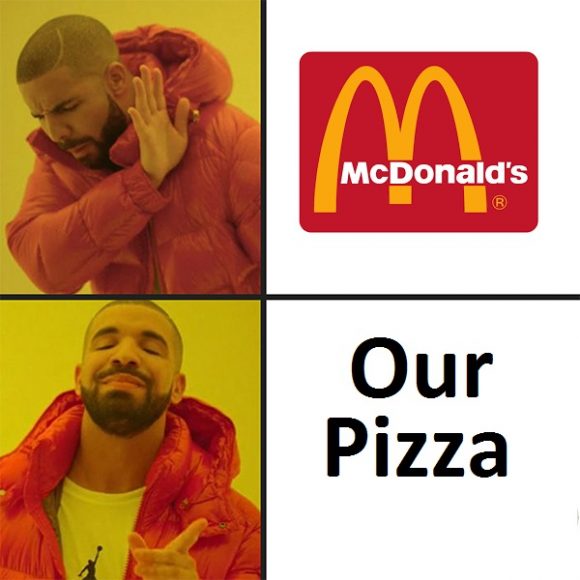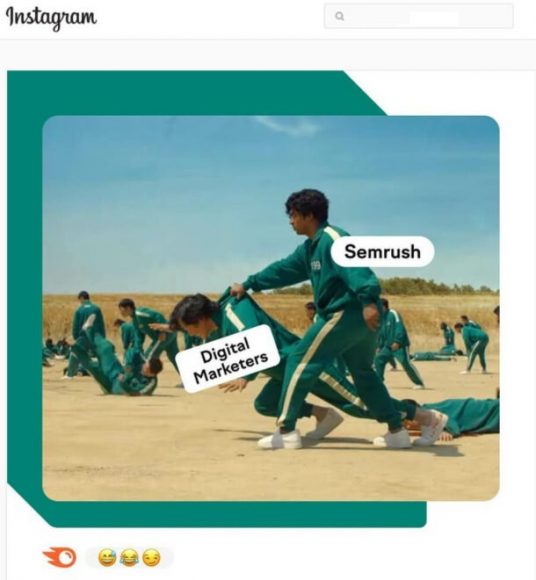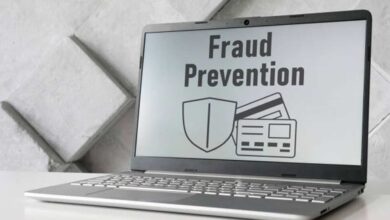Memes In Marketing: What Is Allowed And What Is Forbidden
Leveraging Memes in Marketing: Legal Boundaries and Best Practices
The 2021 copyright reform incorporated the right to “caricature, parody and pastiche” into law (Section 51a UrhG). This new “copyright barrier” allows in particular the use of third-party texts, images, or videos in the form of memes (the author’s contribution to the copyright reform).
Therefore, memes can be seen more and more often in social media posts by companies or as advertising media in ads. However, it is often overlooked that the right to “caricature, parody and pastiche” does not constitute a free ticket for the use of memes.
In the following article, you will therefore find out what caricatures, parodies, and pastiche are, what the limits of their permissible use are, and which uses are still prohibited.
Memes in communication and marketing

According to Wikipedia, a meme is “a creatively created content of consciousness that spreads among people. This is usually humorous and cheering, sometimes also satirical and accordingly socially critical ”.
Nowadays, memes are mainly known as gif animations, which can be integrated as a response, for example, in comment fields on social media platforms or messengers.
Since memes can convey emotions better than texts or emojis and save the effort of creating advertising materials, they are also interesting for marketing.
However, memes are often based on clips from films, TV series, live events, or pictures of celebrities that are copyrighted. So it was previously questionable whether memes could be used without the consent of the author. The right to quote was of little use.
Strict right to quote
To show the scope of the new right to “caricature, parody and pastiche”, it helps to take a look at the much stricter right to quote (Section 51 UrhG). Even if the right to quote is mentioned when taking over other people’s works, this is often inapplicable. Because the quote assumes that the adoption is necessary as evidence of your thoughts and explanations.
The area of application for the right to quote is therefore very narrow. For example, film reviews with scenes from a film or reviews of web design trends with screenshots of websites are possible. Even if the exact wording of an article is important and the reproduction of a pointed interview in your own words would not suffice, it is permissible to refer to a quotation.
Memes rarely fulfill such documentary functions, which is why a separate exception was necessary for them.
Low hurdles for caricatures, parodies, and pastiches
In contrast to the quotation, caricatures, parodies and pastiches do not have to serve as a reference. It is also sufficient that they want to add to the amusement:
- Caricatures – Caricatures are characterized by a satirical emphasis or exaggeration of characteristic features of people, things, or processes and want to expose them to ridicule or otherwise highlight them.
- Parodies – Parodies are modifications of third-party content for satire or criticism.
- Pastiches – The term “pastiches” has not been used so far, at least in common parlance. It means something like imitation or reliance, e.g. as a homage or parody.
Caricatures, parodies, and pastiches are difficult to distinguish from one another and will often overlap conceptually. Therefore they are also summarized in the law as one right. What they have in common is the satirical element, which is also the basis of a meme. According to the legal justification, memes are named as examples of pastiches in addition to remixes, memes, GIFs, mashups, fan art, fan fiction, covers, or sampling.
The permission to use memes also applies to companies. However, it only extends to the copyright portion of memes.
Trademark and personal rights
The copyright protection of an image or a video only extends to the recording itself, but not to the people or brands depicted in the recording. If, for example, the logo of a competitor or an actor appears in a meme, then its use may be permitted under copyright law, but at the same time represent a trademark or personal rights violation.
These “rights to the motif” must be checked in addition to the copyright.
Foreign brands and companies in the meme

Private individuals do not have to observe trademark law. Companies or freelancers, on the other hand, must avoid the risk of confusion, an image transfer, or degradation of other companies and brands (§§ 14, 15 MarkenG):
Likelihood of confusion.
The risk of confusion arises if the target group could see the use of a meme as a sign of cooperation or other economic ties. The risk of confusion would exist even more if, for example, a competitor’s logo in the meme meant that the own products advertised with the meme could be mistaken for products of the logo owner.
When using memes, there is seldom a likelihood of confusion. Be it because they tend to target brands in a satirical way or because they are recognizable as memes, i.e. as mere communication tools. However, there may be a mix-up if a meme is used by itself as an illustration, for example, atmospheric scenes from a competitor’s advertising clip are used to advertise one’s product.
Image transfer:
It is also not allowed to exploit the image, i.e. the appreciation of well-known brands (mainly well-known brands are used in the memes). This reputation exploitation exists if the meme user could be accused of profiting from the good reputation of the brand, for example, if a small search engine advertised “as good as Google”.
In the case of memes, this risk arises if memes are used comparatively, e.g. if a bicycle manufacturer would post a meme with a sports car and the accompanying text “Sporty like our bikes”.
Reduction.
The reduction serves to devalue the validity and the radiance of a brand, for example when selling animal feed under the names “MacDog” and “MacCat” and thus, according to the Federal Court of Justice, lowering the McDonald’s brand.
Since memes are often satirical, many of them also push the boundaries of what is permissible. This limit lies in the case of a reduction that is not justified by the circumstances, i.e. abuse of competitors. This limit also applies to individuals, but companies need to be even more careful and shouldn’t use memes that demean other companies or their brands.
Violations of competition law:
In addition to violations of trademark law, violations of competition law can also be derived from the aforementioned reasons, for example, due to unfair comparisons and the degradation or denigration of competitors and their trademarks.
Copyright violations:
Graphic trademarks are often also protected by copyright. In this case, the right to parody, criticism, or pastiche would also have to cover the use of the trademark. However, this will usually be the case, since in most cases the brand is the core of a parody, for example.
Due to the high risk and the circumstances to be checked in individual cases, memes with third-party brands, logos, labels, or products from competitors or other companies should not be used in marketing. Unless they are used solely for communicative purposes.
If, for example, a company in the media industry wishes everyone a good lunchtime and posts a meme with Ronald McDonald, then this use of the meme primarily has a communicative function. It would be different if this posting came from another burger roaster.
Personal rights and the right to one’s image
In addition to foreign brands or companies, people are mainly represented in memes. These are also entitled to the protection of their advertising value:
- Infringement of the right to one’s picture: The publication of portraits of persons generally requires consent (Section 22 (1) KUG). Only in the case of people standing in the context of historical events (e.g. on stages) or as parts of assemblies, etc. (e.g. at a demo or as part of the audience at a public event), an exception is possible here (Section 23 (1) No. 1 and 3 KUG).
- Image transfer & degradation: But even if the recording was made, for example, in the context of a public appearance, it must not be used to skim off the economic value of a person or to reduce this value. In addition to the prohibition of insults, this also means that the fee that one would have to pay a prominent person for their “advertising appearance” cannot be circumvented by invoking a “right to memes”.
This shows that despite the new legal situation, the use of memes with celebrities is still not legally permitted – unless the advertisers can invoke freedom of expression.
The Sixt method

The car rental company Sixt is known for including celebrities in advertising campaigns without their consent. As shown above, this is fundamentally inadmissible, as it exploits a person’s advertising value.
However, Sixt relies on its freedom of expression, which, in the opinion of the BGH, companies are also entitled to. However, the following factors must be taken into account:
- Event relevant for the general public: Sixt often refers to faux pas by politicians or similar circumstances that are widely discussed in the press and other media.
- Comment in the foreground: The advertisement contains a comment on the event, e.g. a satirical comment, which is based on a fall height that results from the comparison with one’s performance. The satirical statement is optically in the foreground.
- Daily News: To ensure that the event is still relevant for the general public, the right advertising is published very promptly, usually within three days, and activated.
Other companies also advertise using Sixt’s method, but this should never be done without a “war chest”. Because even if a prominent person should ultimately be in the wrong, a possible court case can already result in costs of 10,000 – 15,000 euros in the first instance.
And should it turn out that the use of the meme exceeds the limits of what is permissible, then there would also be compensation for those affected. For local celebrities, that can only be a few thousand euros, for Hollywood celebrities it can be five to six-figure amounts. Therefore, the risk must always be assessed.
Read Also: Unlock Snapchat’s Marketing Potential for Businesses
Degree of risk in communicative and advertising use

The practical risk depends on which memes are used for which purposes and by whom.
Above all, the type of use is decisive:
- Communicative use: Communicative use means that a meme is used as a means of expression in conversations with users. The typical case is the use of animated gifs provided by most social networks. In this case, the focus is on the character of opinion and communication and the risk of legal violations is very low.
- Use as an advertising medium: If a meme is used in ads or in posts that serve to directly promote products or companies, the risk is high and this use should be legally checked in advance by a specialist. This applies in any case if third-party brands or people are depicted on the meme.
Aside from the legal aspects, a meme can also be used on a risk basis. For example, it is less likely that a Hollywood actor will take action against the use of a meme with its image by a small start-up.
Conversely, the larger the advertising company, the greater the probability, as the higher the compensation is if the company’s solvency increases. It also makes the discovery of this potential legal violation much more likely.
Read also: Why is Performance Marketing Important for Your Business?
Checklist
You can use the following checklist to check whether you should use a meme for marketing purposes:
Is it a communicative use?
The risk is low, the use is justifiable.
Is it used as an advertising medium (e.g. banners, ads)?
The risk is higher and the greater the reach of the advertising company. A legal check is recommended in advance.
Is a foreign brand shown in the meme?
There must be no appearance of cooperation, i.e. no comparisons with one’s services and products, no abuse of a brand. Avoid memes with competitor brands.
Is a person depicted in the meme?
Use is generally not permitted, except for a statement on a public event (Sixt method).
When it comes to marketing to engineering companies, understanding what is allowed and what is forbidden in utilizing memes is crucial. Transitioning into meme marketing requires careful consideration of the boundaries.
Firstly, it is essential to understand the target audience’s preferences and humor within the engineering industry. Secondly, identify the permissible content that aligns with the brand’s values and resonates with the audience.
However, it is equally important to be aware of the forbidden territory, such as offensive or insensitive memes that may harm the brand’s reputation. Additionally, obtaining necessary permissions for copyrighted materials is crucial to avoid legal issues.
By navigating these guidelines and employing memes strategically, marketers can effectively engage with engineering companies while staying within the boundaries of what is allowed and avoiding what is forbidden.
Conclusion and practical recommendation
The right to “caricature, parody, and pastiche” also offers advantages in marketing. However, these exist above all in the communicative use of memes in the context of online discussions or postings that do not directly advertise products or your own company.
As soon as the memes are used as advertising material, the risk of violating third-party trademarks or personal rights increases considerably and a legal check should be carried out in advance.
For example, the appeal to freedom of expression, similar to what Sixt shows, comes into question. In such cases, the advantage of the new regulation is at least that a meme could be used instead of a stock image of a celebrity.







